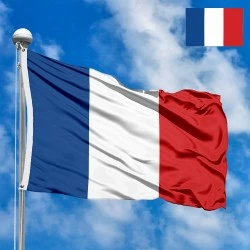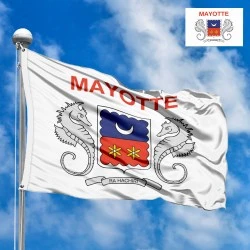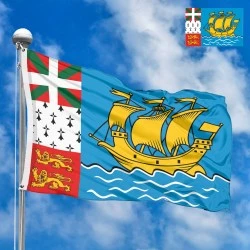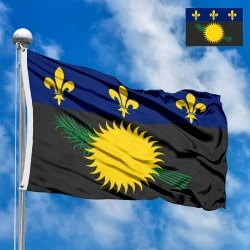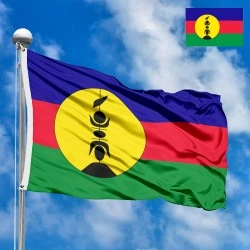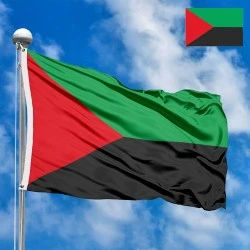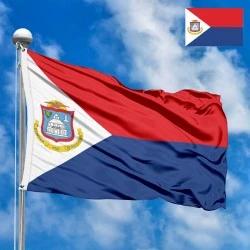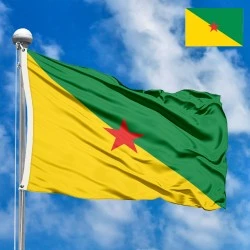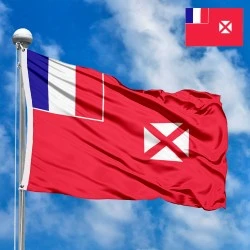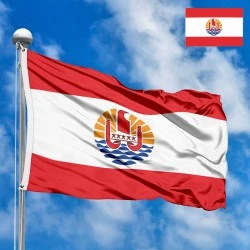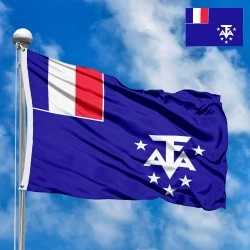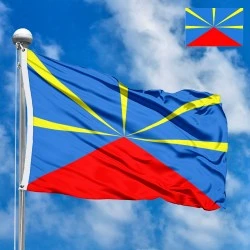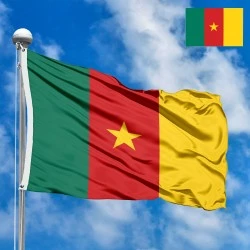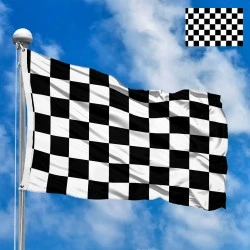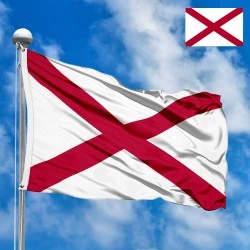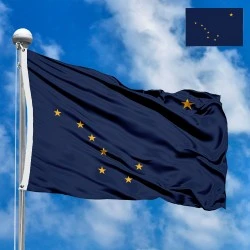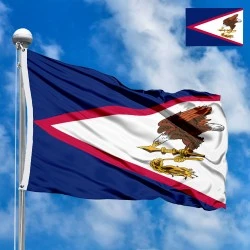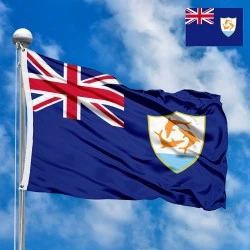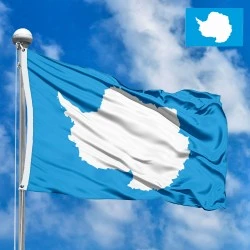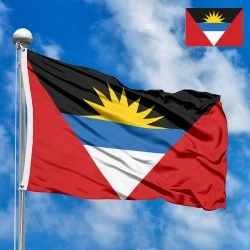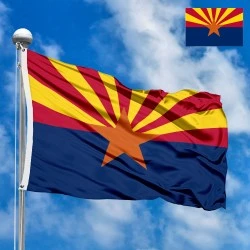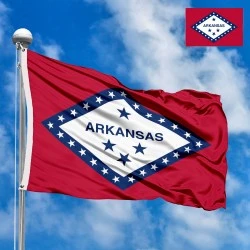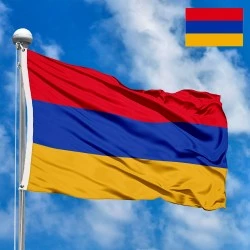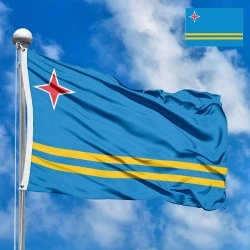Flag of Saint Barthelemy
- Flag Type: Regional
- Proportions (official): 2:3
- Official name: Saint Barthélemy
- Local name: Saint Barthélemy
- Sovereignty (year): NO (French overseas collectivity)
- Country code, territory: BL, BLM, 652
- Capital: Gustavia
- Large cities: Gustavia, Lorient, Saint-Jean
- Population: ~11,000 (2024, estimate)
- Religions: Christianity ~95%
- Area (km²): 21
- Highest point: Morne du Vitet (286 m)
- Lowest point: Caribbean Sea (0 m)
- Currency: Euro (EUR, €)
- Languages: French, French Antillean Creole
- Dialing code: +590
- National domain: .bl
Flag Information
General information
Demography and Culture
Economy and communications
- All Flags
- Flags of Countries by Continent
-
Flags of Organizations
- Flags of UN countries
- Flags of the European Union countries
- Flags of NATO countries
- Flags of the countries of the Organization of Islamic Cooperation
- Flags of the countries of the Organization of American States
- Flags of the Arab League countries
- Flags of the African Union countries
- Flags of the countries of the Union of South American Nations
- Flags of the Commonwealth of Nations
- Flags of the countries of the Secretariat of the Pacific Community
- Flags of the Nordic Council countries
- Flags of the Caribbean Community
- Flags of the countries of the Association of Southeast Asian Nations
- Flags of the East African Community
- Flags of the countries of the Organization of Turkic States
- LGBT Community Flags
- Historical Flags
- Ethnic Flags
- Flags of the USA (states)
Description
The Flag of Saint Barthélemy is a unique and unofficial banner that perfectly encapsulates the island's rich and intricate history. While the official flag of this French overseas collectivity remains the French tricolor, a de facto flag has emerged that is widely used to represent the island’s distinct identity. This cherished emblem consists of the island’s coat of arms centered on a clean white field, a symbol of peace and the pristine beaches that define its shores. The coat of arms itself is a masterpiece of heraldry, telling the island’s story through a series of carefully chosen symbols that represent its French roots, Swedish legacy, and local fauna. It is a visual testament to the island's enduring charm, its blend of European heritage, and the resilient spirit of its inhabitants, known as "Saint-Barths." The flag is a powerful and cherished symbol of a community that is proud of its unique past and vibrant present.
Design and Symbolism: A Heraldic Tapestry of History and Nature
The unofficial flag of Saint Barthélemy is defined by its central coat of arms, a detailed and expressive symbol of the island’s journey through history. The shield, which is the main part of the coat of arms, is divided into three horizontal sections, each with a profound historical meaning.
-
The Upper Section (Chief): The top part of the shield is a blue field adorned with three fleur-de-lis, the timeless symbol of the French monarchy. This emblem proudly establishes Saint Barthélemy’s fundamental connection to France, acknowledging its original colonization and its modern status as a French territory. The fleur-de-lis represents the enduring influence of French culture and the island's official status.
-
The Middle Section: The middle section features a red field with a prominent Maltese Cross. This symbol is a tribute to Saint Bartholomew, the island's patron saint, and its Christian heritage. It represents the European maritime and religious orders that were influential during the age of exploration, embodying the island’s deep-rooted faith and its place in the historical narrative of the Caribbean.
-
The Lower Section: The bottom section of the shield contains a blue field with three gold crowns. This is a powerful and unique symbol representing the island’s period under Swedish rule from 1784 to 1878. The three crowns, known as the Tre Kronor, are the national emblem of Sweden, and their inclusion on the coat of arms is a direct reference to this significant chapter in the island's history, when it thrived as a free port under Swedish governance.
-
Supporters: Flanking the shield on either side are two graceful pelicans, depicted in black and white. These birds are a natural and fitting symbol of the island's unique ecosystem and coastal environment. They represent the local wildlife and the deep connection of the islanders to the sea. The pelican, often a symbol of self-sacrifice and charity (due to the myth that it feeds its young with its own blood), can also be seen to represent the resilience and strong community spirit of the Saint-Barths.
-
The Mural Crown and Motto: Crowning the entire coat of arms is a mural crown, a golden emblem of civic pride and sovereignty. Below the shield, a banner proudly displays the Latin motto "Ouanalao," which is the original Carib-Arawak name for the island. This motto serves as a vital reminder of the island’s indigenous roots, a testament to the first people who inhabited the land long before European arrival.
History and Origins: A Chronicle of French, Swedish, and Caribbean Identity
The flag’s design is a living chronicle of Saint Barthélemy’s historical evolution, a story that begins with its indigenous inhabitants and is shaped by two European powers.
-
Indigenous and French Beginnings: The island was originally known as "Ouanalao" by its native Carib-Arawak inhabitants. It was formally claimed for France in 1648 and named in honor of the apostle Saint Bartholomew, solidifying its initial French identity, as symbolized by the fleur-de-lis.
-
The Swedish Legacy: In a pivotal historical event, King Louis XVI of France ceded the island to King Gustav III of Sweden in 1784. This act was a strategic move that granted France trade rights in the Swedish port of Gothenburg. For nearly a century, under Swedish rule, Saint Barthélemy flourished as a free port, with its capital Gustavia becoming a major hub for trade. The three crowns on the coat of arms are a direct and proud reference to this era of prosperity, which left a lasting cultural and architectural imprint on the island.
-
Return to France and Modern Autonomy: The Swedish period came to an end in 1878 when the island was sold back to France. It was peacefully integrated into the French colonial administration of Guadeloupe. In 2007, Saint Barthélemy became a separate overseas collectivity of France, a move that granted it a greater degree of political autonomy. This new status reinforced the island’s unique identity, which is so beautifully captured by its unofficial flag.
Interesting Facts and Local Significance
The flag's informal status has not diminished its importance to the local community; in many ways, it has amplified it.
-
A Symbol of Local Pride: The flag is a powerful and visible emblem of local pride. While the French national flag is used for official purposes, the local flag is displayed widely on homes, businesses, and boats, particularly during local festivals and celebrations. This dual presence signifies a deep sense of patriotism towards France while also asserting a distinct local identity.
-
The Pelican as a Local Icon: The pelican, which is so prominent on the coat of arms, is an iconic part of the island’s natural landscape. Its inclusion on the flag elevates the island’s unique fauna to a status of national symbolism, connecting the people not only to their history but also to their natural environment.
-
A Tourist Brand: The flag’s rich symbolism and appealing design have made it an unofficial brand for Saint Barthélemy as a tourist destination. It beautifully represents the island's unique blend of sophisticated French culture, a charming Swedish past, and authentic Caribbean nature. Souvenirs and merchandise bearing the coat of arms are very popular, allowing visitors to take a piece of the island’s story with them.
Significance for the Inhabitants: The Banner of a Unique People
For the people of Saint Barthélemy, the unofficial flag is more than just a piece of cloth; it is a profound declaration of who they are. It represents a heritage that is distinctly their own, a unique narrative that sets them apart from their Caribbean neighbors and even from mainland France.
The flag’s design, with its blend of French, Swedish, and indigenous symbols, is a visual confirmation of their diverse heritage. It is a constant reminder that their culture is not a simple offshoot of France, but a unique and intricate product of various historical influences. The prominent placement of the three crowns for Sweden signifies a cherished period of prosperity and autonomy that shaped the island's character. This sense of independent spirit is a core part of the island's identity, a belief that while they are French citizens, they are also a separate and special community.
Furthermore, the flag’s motto, "Ouanalao," and the pelicans serve as vital links to the island’s roots and its natural beauty. By keeping the indigenous name alive and honoring its wildlife, the flag underscores the community’s commitment to preserving its entire history. The flag is therefore not a symbol of political separation, but rather a powerful declaration of cultural distinction and local pride, a banner of a community that is secure in its identity and proud of its extraordinary past.
In the demonstration images, full-size flags are shown with proportions of 2:3, and hand-held flags with proportions of 1:2.
Donation
Download
Completely free for commercial and non-commercial use (public domain).
You can freely use them in your news magazines, websites, software, mobile applications.
We appreciate a backlink to https://flagssite.com
Raster files - Flag of Saint Barthelemy (PNG, JPG)
 Waving flag
Waving flag
- PNG format (transparent background), 72dpi, dimensions in Pixels (px), aspect ratio 3:4.
- 15х20 px
- 30х40 px
- 60х80 px
- 120x160 px
- 240x320 px
 Sizes:
Sizes:
"v15" - image size (by height); if necessary, replace with available: v15, v30, v60, v120, v240.
!!! For resizing, use the Latin (eng) keyboard layout.
<img src="https://flagssite.com/flags/v15/20540.png" alt="Flag of Saint Barthelemy">
 Round flag
Round flag
- PNG format (transparent background), 72dpi, dimensions in Pixels (px), aspect ratio 1:1.
"d15" - image size (diameter); if necessary, replace with available: d15, d30, d60, d120, d240.
!!! For resizing, use the Latin (eng) keyboard layout.
<img src="https://flagssite.com/flags/d15/20540.png" alt="Flag of Saint Barthelemy">
 Rectangular flag 2:3
Rectangular flag 2:3
- JPG format, 72dpi, dimensions in Pixels (px), aspect ratio 2:3.
"h30" - image size (by height); if necessary, replace with available: h15, h30, h60, h120, h240, h360, h480.
!!! For resizing, use the Latin (eng) keyboard layout.
<img src="https://flagssite.com/flags/h30/20540.jpg" alt="Flag of Saint Barthelemy">

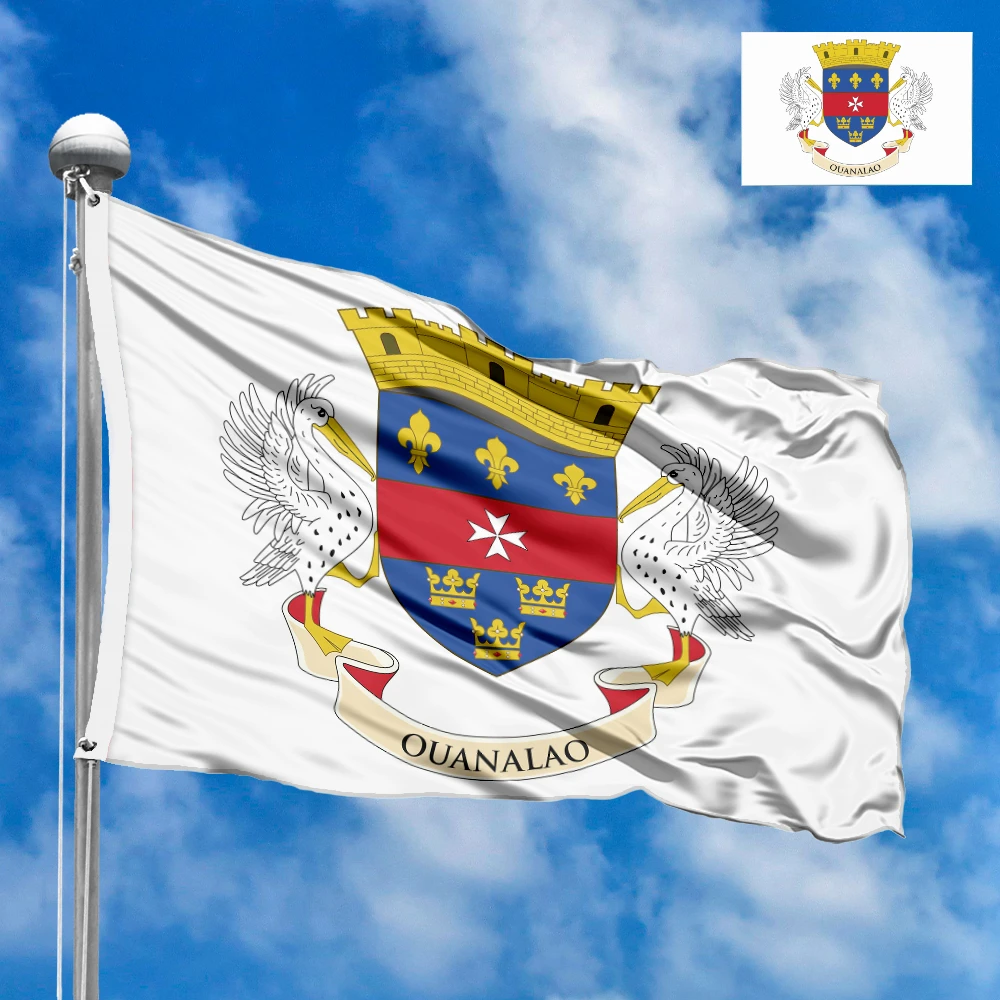
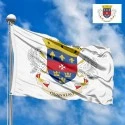
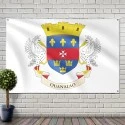



 Sizes:
Sizes:
 Sizes:
Sizes:
